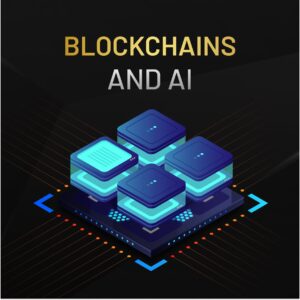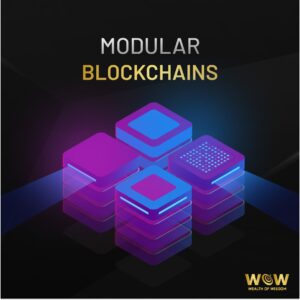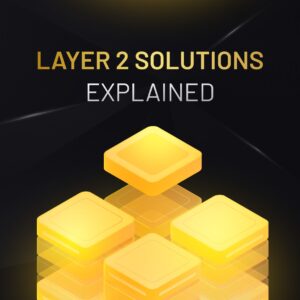Blockchain technology has revolutionised the way we think about digital transactions, but as the industry has grown, so too have the challenges associated with it. This is where Layer 2 solutions come into play. Whether you’re new to the crypto world or an experienced investor, understanding Layer 2 is crucial for navigating the future of blockchain.
What Caused the Need for Layer 2 Solutions?
The need for Layer 2 solutions arose from the limitations faced by blockchain networks, particularly in terms of scalability. As blockchain adoption increased, so did the volume of transactions. Networks like Ethereum, while highly secure and decentralised, struggled to handle the surge in transactions, leading to slower processing times and higher fees. This bottleneck limited the practical use of blockchain in everyday applications and hindered mass adoption.
To put it simply, the original blockchain (Layer 1) could only handle so much. As more users and applications flooded the network, it became clear that a solution was needed to improve speed, reduce costs, and maintain the integrity of the blockchain. Enter Layer 2 solutions—a way to scale the network without compromising on security or decentralisation.
What Does It Mean to Have Layer 2?
Layer 2 refers to a secondary framework or protocol built on top of an existing blockchain (Layer 1). This additional layer is designed to handle a significant portion of transactions off the main chain, thereby reducing the load on the Layer 1 blockchain. By processing transactions off-chain and only recording the final result on the main chain, Layer 2 solutions can dramatically increase transaction throughput and reduce costs.
In essence, Layer 2 serves as a scalability solution. It allows the blockchain to process more transactions per second, making it faster and more efficient. This is akin to having a highway with multiple lanes instead of just one—traffic flows more smoothly, and congestion is minimised.
With Layer 2 Incorporated, What Is the Plan for Layer 2 Solutions in the Future?
The future of Layer 2 solutions is bright, with ongoing developments aimed at further enhancing their efficiency and integration. As blockchain technology continues to evolve, we can expect to see:
- Greater Interoperability: Future Layer 2 solutions will likely be designed to work seamlessly across different blockchains, allowing for smoother transactions and better cross-chain functionality.
- Increased Decentralisation: Even though Layer 2 solutions help with scalability, ensuring that they remain decentralised will be a key focus. This will involve developing more decentralised protocols to maintain the security and trustless nature of the blockchain.
- Broader Adoption: As Layer 2 solutions prove their effectiveness, more industries and use cases will emerge, integrating Layer 2 technology into everyday operations.
- Enhanced User Experience: Expect future Layer 2 solutions to focus on making blockchain technology more accessible and user-friendly, with smoother interfaces and easier onboarding processes.
What About Layer 2 Should You Be Aware Of?
While Layer 2 solutions offer significant benefits, there are a few considerations to keep in mind:
- Security: Although Layer 2 solutions are designed to be secure, they rely on the security of the underlying Layer 1 blockchain. If the base layer has vulnerabilities, they could potentially affect Layer 2 as well.
- Complexity: Implementing and interacting with Layer 2 solutions can be more complex than dealing directly with Layer 1. Users and developers may need to invest time in understanding how these solutions work. However, with Arbitrum, this complexity is significantly reduced. Arbitrum offers a highly intuitive interface that simplifies the process of interacting with the Ethereum network. By providing a seamless user experience, Arbitrum allows users to benefit from faster and cheaper transactions without needing to delve into the technical intricacies of the underlying technology. As the platform continues to evolve, we can expect further improvements in usability, making it even easier for both beginners and experienced users to engage with Layer 2 solutions.
- Potential Centralisation: Some Layer 2 solutions may introduce centralization at certain points, which could undermine the decentralisation principles of the blockchain. Arbitrum addresses this concern through its decentralised governance model, where the community plays a crucial role in decision-making processes. This approach ensures that no single entity holds too much power over the network, aligning with the core values of decentralisation that are fundamental to blockchain technology. By choosing Arbitrum, users can enjoy the scalability benefits of Layer 2 while still participating in a network that prioritises transparency and community involvement.
Examples of Layer 2 Solutions
Several Layer 2 solutions have been developed, each with unique approaches to scaling:
- Arbitrum: As highlighted, Arbitrum is an Ethereum Layer 2 solution that uses Optimistic Rollups to enhance scalability while maintaining compatibility with existing Ethereum contracts.
- Optimistic Rollups (Ethereum): These allow Ethereum to process more transactions by batching them together and verifying them off-chain before settling on the main chain.
- Polygon (formerly Matic): A platform that provides Layer 2 scaling solutions for Ethereum, offering faster and lower-cost transactions through sidechains.
- Lightning Network (Bitcoin): A Layer 2 solution for Bitcoin that enables faster and cheaper transactions by creating off-chain channels between users.
WOW leverages the Arbitrum network to offer you significantly lower gas fees, enhancing the overall transaction experience by making it faster and more affordable.
What Industries Have Taken Layer 2 Solutions On Board to Help Them Achieve More Success?
Various industries have started integrating Layer 2 solutions to improve efficiency and reduce costs:
- Finance: The financial sector is leveraging Layer 2 to facilitate faster and cheaper cross-border transactions, enhancing the efficiency of payment systems and reducing fees.
- Gaming: Blockchain-based games often require high transaction volumes. Layer 2 solutions help process in-game transactions quickly without burdening the main blockchain.
- Supply Chain Management: Layer 2 solutions are being used to track goods and manage supply chains more efficiently, ensuring transparency and reducing delays.
- DeFi (Decentralised Finance): DeFi platforms rely on fast and low-cost transactions. Layer 2 helps scale these platforms, making them more accessible to a broader audience.
Layer 2 solutions represent a significant step forward in the evolution of blockchain technology, offering enhanced scalability, reduced costs, and broader adoption across various industries.
Education is the key to unlocking the potential of the crypto industry, empowering individuals to make informed decisions, drive innovation, and navigate the ever-evolving digital landscape with confidence. Stay connected with WOW and empower yourself with education and a supportive community to help you with your crypto journey.
With WOW, it’s an opportunity for all.








